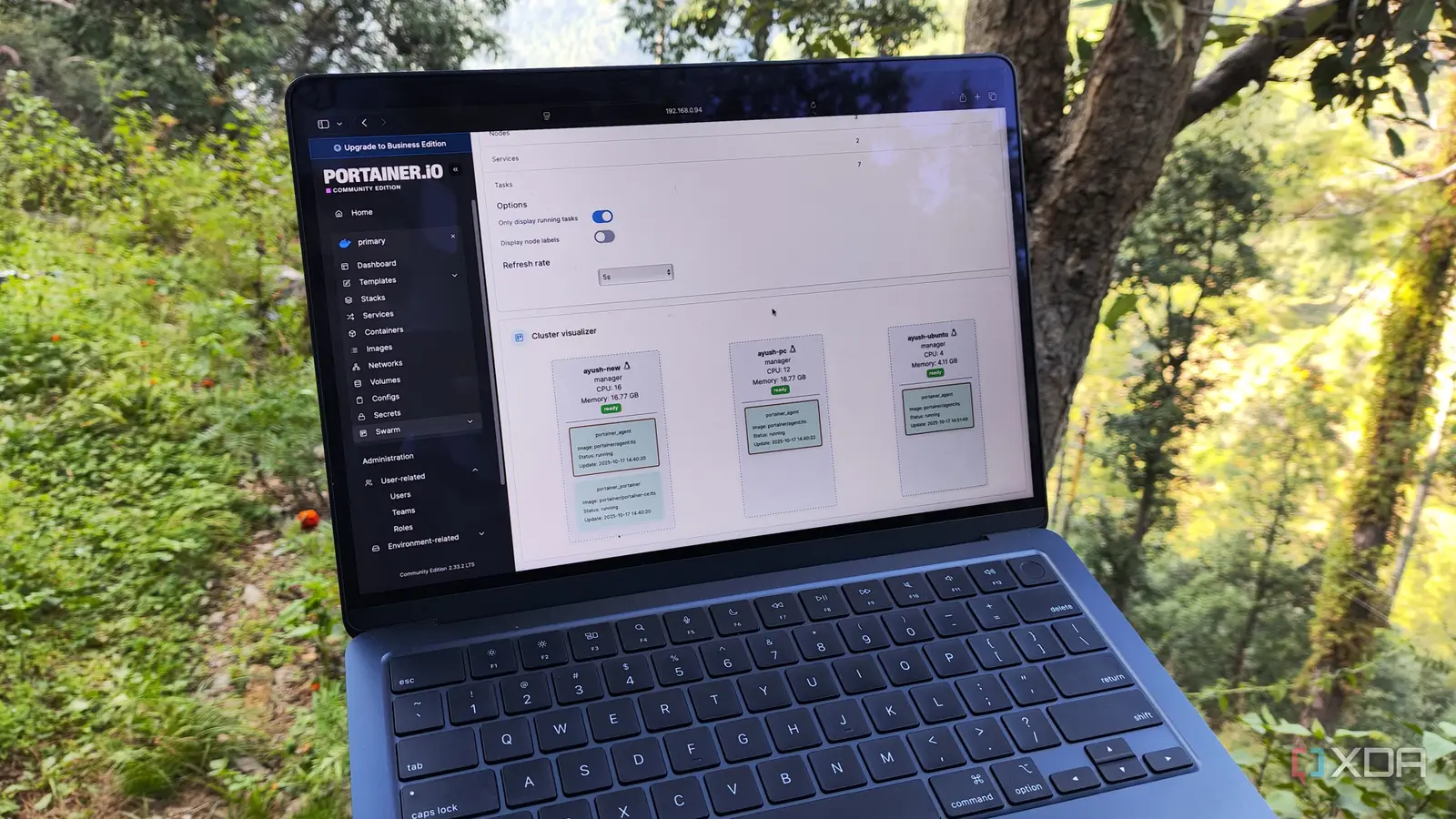
With their lightweight nature and solid isolation provisions, containers are quite useful in home labs when you need to self-host applications without the extra performance overhead of virtual machines. As such, you’ll find plenty of tools designed to enhance your containerization tasks, and these range from barebones container runtimes to powerful orchestration platforms. Kubernetes is one of the most popular container orchestration platforms out there, though its enterprise-grade utilities make it rather overkill for the average home lab.
In contrast, Docker Swarm is often regarded as the inferior orchestration tool, as it’s not only restricted to Docker products, but also doesn’t feature auto-scaling provisions. But as someone who has tinkered extensively with K8s and Swarm, I have to admit that Docker’s orchestration platform is a lot more useful for normal home labs.
Setting up Docker Swarm is a cakewalk
And it’s just as simple to use
Docker Swarm’s strength lies in its accessible nature, and its setup process is extremely simple even for beginners. If you’ve already installed Docker, you can turn any machine into the Docker Swarm manager node by running the docker swarm init –advertise-addr IP_address_of_host command. Likewise, adding new nodes to the newly-deployed cluster is as simple as executing docker swarm join followed by the join code (from the previous command) on the secondary machines. If you go down the CLI route, Swarm’s commands aren’t all that different from the ones you’ll run on a typical Docker setup.
In contrast, a Kubernetes cluster requires a lot more elbow grease. First, you’ll have to choose between different K8s runtimes. Even the simpler ones like MicroK8s require a lot of extra packages and terminal commands, with Arm devices like the Raspberry Pi units requiring additional kernel tweaks to deploy the Kubernetes runtime. Likewise, Kubernetes is a lot more challenging to use than Docker Swarm as you’ll have to deal with complex network policies, pod deployments, and role bindings, especially if you plan to use a command-line interface to manage your K8s cluster. And that’s before you consider the lack of support for Docker Compose files on Kubernetes…
You can use Docker Compose configs in Swarm
They’re a lot more accessible than K8s pod files
When you start self-hosting services en-masse, you’ll end up loving Docker Compose files as much as I do. Rather than writing long commands, Docker Compose files let you configure every aspect of your containers using YAML code. Since most containerized services tend to include docker-compose.yml files in their project repositories, Compose lets you get the service up and running in less time than you’d take to finish reading this sentence.
Technically, Kubernetes has a similar concept in the form of pod and object files, so you do get the ability to deploy containers from YAML configurations. Unfortunately, the typical docker-compose.yml files aren’t compatible with Kubernetes, so you can’t simply paste the Docker Compose YAML code from project repos when you want to deploy new services. That said, many popular services are available on Helm charts, which makes deploying them slightly easier. There’s also the Kompose utility, which can translate Docker Compose YAML configs into the equivalent K8s code, though I’ve had mixed results when using it on my MicroK8s cluster.
Portainer pairs well with Docker Swarm
So, you’re covered on the web UI front as well
Although terminal commands are the most recommended method for controlling container-heavy clusters, nothing beats the convenience of a menu-based web interface. If you rely on MicroK8s to manage your Kubernetes cluster, you may be aware that it lets you enable a web UI. Having used this interface to manage pods, create policies, and define volumes since I deployed K8s ages ago, I consider Kubernetes’ web UI a key advantage over its Swarm rival.
Well, you could set up Swarmpit to manage your Swarm cluster, but doing so requires some extra tweaks, including running a Traefik HTTPS Proxy. Fortunately, the all-powerful Portainer evens the odds, and it’s a lot easier to use than the Kubernetes Dashboard. Deploying Portainer on the manager node is just as simple, and this neat web UI can even detect cluster nodes without requiring additional config tweaks. Plus, since Portainer lets you configure everything from network settings and storage volumes to container images and Swarm stacks, it’s a convenient alternative to the already simplified Docker Swarm CLI commands.
Nevertheless, Kubernetes offers solid benefits for hardcore setups
Although Docker Swarm is my go-to platform for containers that require high-availability support, its lack of compatibility for non-Docker products is my biggest gripe with the platform. I started migrating my container workloads to Podman earlier this year, and while it’s a bit more difficult to use, it serves my DevOps and sysadmin experiments fairly well.
For most home labbers, Docker Swarm will be more than enough if you want the superior fault tolerance of a cluster environment. But if you’ve built a home lab to train your DevOps skills like I did, you’ll want to go for Kubernetes instead – not just because it’s compatible with Podman and other container platforms, but also because it meshes well with automation utilities and other community tools.